About the latest “Borea”, “Bark”, “Mace” and a little about “Borea-A”
In past articles, we examined the reasons why we need naval strategic nuclear forces, and some aspects of the SSBN's stealth created during the Soviet era.
What about today?
In the 2000s, the basis of the nuclear power of the Russian Navy was 7 “Dolphins” of Project 667BDRM. Good ships according to the feedback of sailors, even at the time of their birth, that is, in the 80s of the last century they were no longer on the cutting edge of military-technical progress. And therefore it is not surprising that in the first large-scale state armament program (GPV-2011-2020), a complete renewal of naval strategic nuclear forces was planned: the construction of 8, and then, in the version adjusted in 2012, even 10 SSBNs of the latest design.
Although ... in fact, things were a bit wrong. As mentioned earlier, in the 70s of the last century, the USSR simultaneously created 2 types of SSBNs: the grandiose "Sharks" of project 941, which were to become a full-fledged 3rd generation of submarine nuclear submarines of this class and the "moderate" Dolphins 667BDRM of the generation "2 + ", As the development of the previous type of" Squid ". It can be assumed that the Dolphins were created in case something went wrong with the Sharks, so as not to be left with nothing. But in the end, both projects went into mass production.
However, the practice of parallel construction of two types of ships of the same purpose was vicious, and in the USSR they understood this. Therefore, back in the 80s, a new strategic submarine cruiser began to be designed at the TsKBMT Rubin, which in the future was supposed to replace both the Sharks and the Dolphins. The lead SSBN, the project of which received the number 955, even managed to be laid in 1996, but then the upheavals began.
Main armament
The main problem arose with the new weapons of the SSBN - R-39UTTH "Bark". This ballistic missile was supposed to be our analogue of the American Trident II and, it must be said, the performance characteristics of the products made a considerable impression. The rocket was designed as a solid fuel, and its maximum cast weight reached 3,05 tons. A massive RGCh IN with 10 warheads of up to 200 Kt of power could be delivered to a distance of at least 9, and possibly 000 km. A special “highlight” was the ability of “Bark” to ice start - in some way unknown to the author, the rocket managed to overcome the layer of ice. Thus, the task of the SSBN was significantly simplified: it was not necessary to look for wormwood, or to push ice masses into the hull in places where the ice is thinner. Probably, the Bark had some restrictions on the thickness of the ice to be overcome, but still the capabilities of underwater missile carriers with such a missile increased sharply.
The power of the American anti-submarine aviation literally drove our SSBNs under the ice. The latter was a good defense against discharged sonar buoys (RSL), as well as against a number of unconventional methods for detecting submarines. But the launch of a conventional ballistic missile could not be made through an ice cover. Accordingly, the SSBN commanders had to look for places where the thickness of the ice allowed them to push through the hull of the ship, and then a very dangerous ascent procedure began, requiring virtuoso skill from the crew, and still often leading to damage to the submarine. This operation usually took hours. But even after surfacing, the SSBN had problems, because it was necessary to remove pieces of ice (sometimes a man’s height, or even more) from the covers of ballistic missile shafts. Obviously, “Bark” greatly simplified the task of submariners and, what is extremely important, reduced the preparation time for striking.
In addition, the Bark could be launched not on the optimal ballistic, but on a more persistent trajectory - in this case, obviously, the missile range decreased, but the flight time also decreased, which was important for hitting missile strike detection / warning systems and other important US goals.
Perhaps the only drawback of the Bark was its mass, which reached 81 tons. No matter how terrible the Bark was, the Trident II still remained the leader, having 2,8 tons of cast weight with a mass of 59 tons, with the maximum firing range of the American rockets reached 11 thousand km. Alas, for a number of objective reasons, the USSR, which created a number of remarkable liquid ballistic missiles, lagged behind the United States in the field of solid fuel. The problem was not only, but possibly not so much in the mass of the rocket as in its dimensions: the length of the Trident II was 13,42 m, while the similar indicator of Bark was 16,1 m, which obviously required an increase dimensions of the carrier.
Alas, the work on the “Bark” was curtailed in 1998, and the work on promising SLBMs was transferred from the GRTs im. Academician Makeev at the Moscow Institute of Heat Engineering (MIT), the developer of the then-top "Topol" and "Topol-M". Officially it sounded that the Bark was created using a number of outdated technical solutions and that the Makeyevtsy could not cope with a solid-fuel rocket, since all three first launches ended unsuccessfully. It was also noted that further work on the Bark will be dragged out very much, since production facilities are capable of producing only one such missile in 2-3 years. In addition, the benefits of taking fleet MIT-ovsky "product": the maximum unification of land and sea ballistic missile variants, cost savings. And there is such a strange argument as the separation in time of the peaks of rearmament of the sea and land components of the strategic nuclear forces.
But Hiley Likely
All the data known to the author indicate that the only reason for the transfer of the design of the new SLBM to MIT was the resourcefulness of the leadership of the Moscow institute in an effort to "pull the blanket over itself", deploying cash flow to itself to create a new missile.
To begin with, we recall that it was in the GRTs im. Academician Makeev (SKB-385 under the USSR) for many decades our SLBMs were created. It was this design bureau that specialized in the naval component of strategic nuclear forces, while MIT worked exclusively in the interests of the Strategic Missile Forces. One of the arguments of the supporters of the MIT-Bulava was at that time a huge amount for fine-tuning Barca - up to 5 billion rubles. in 1998 prices. But how could one count on the fact that MIT specialists, who saw the sea only during their vacation from the beach, would be able to create SLBMs cheaper?
I must say that preliminary design developments on the Bark were started back in mid-1980, but the real work started only in November 1985, after the decision of the Council of Ministers on the beginning of the development work on the Bark. By the fall of 1998, when work on the “Bark” was discontinued, the GRC them. Academician Makeev worked on it for about 13 years, of which 7 fell on the timelessness of the “wild 90s” with the collapse of cooperation between the CIS countries, interruptions in funding, etc. etc. The rocket had to be redone, due to the inability to obtain the right fuel - the plant for its production remained in Ukraine and was redesigned for household chemicals. Nevertheless, the readiness of the complex at the time of closure was estimated at 73%. It was assumed that to complete work on the Bark, it would take another 3-4 years and 9 test missile launches. It is possible, and even more likely, that such launches would be needed more, but it was quite possible to meet the 12-15 launches. Talking that the production of these missiles has dragged on for decades does not stand up to criticism - production capacities made it possible to produce up to 4-5 Barks a year, the question was only in financing. Perhaps 2002 was really too optimistic a deadline for completing the R-39UTTX project, but in 2004-2005, Bark could well pass the exams and put into service.
The author does not have any information about the costs of the program for creating the "Mace". But it is known that MIT spent almost 20 years on this - from the fall of 1998 to the summer of 2018, and during this time 32 launches were made. Although strictly speaking, to say: "MIT did" is wrong, because in the end the Makeevites were forced to join the process of fine-tuning the "Mace".
Thus, in all likelihood, the creation of the “Mace” ultimately cost the country much more than the cost of the development of Bark. But the problem is that the difference in the cost of creating missiles is only part of the overall damage to the country's defense from transferring the design of SLBMs from Makeev’s center to MIT.
As you know, the financial situation of the Russian Federation did not allow to keep the USSR fleet in its former composition. In this case, of course, it would be reasonable to keep the most powerful and modern ships in the Navy. Among the SSBNs, there were six “Sharks” of Project 941 - according to the logic of things, they should have been left in the current fleet.
Not that the Shark was the perfect ship. It was not for nothing that it was said about her, as about the victory of technology over common sense. Nevertheless, since these “Cold War monsters” were built and put into operation, then, of course, they should be used to ensure the security of the country, and not to be cut into needles.
But alas, this turned out to be completely impossible, because the warranty periods for storing their main armament, the R-39 SLBMs, expired in 2003, and no new missiles of this type were produced. It is well known that the Barks were initially created not only for the new type of SSBNs, but also for the re-equipment of Project 941 ships. In other words, the cost of transferring the Sharks from R-39 to R-39UTTH was relatively small. But when designing the Bulava, no one thought about the giant TRPKSN, and therefore the cost of re-equipping the Sharks under the Bulava would be enormous. That is, theoretically it was possible, but practically - comparable in cost to the construction of a new ship.
As a result, at the beginning of the 667st century, the basis of the NSLF of the Russian Federation was the significantly less perfect Dolphins of Project 2007BDRM. But their missiles also required replacing ... That is, all the beautiful words about the unification of ballistic missiles of the Strategic Missile Forces and the Navy remained beautiful words: the fleet was forced to create a line of liquid-based SLBMs: first the Sineva, and then the Liner, which were put into service in 2014 and XNUMX respectively. In other words, if we began to finish the Bark, then the creation of one or even both of these missiles could well be abandoned - and, of course, save on that.
In addition, we should not forget that the Bark had much greater capabilities than the Bulava. The maximum casting weight of the Bark is 2,65 times greater; the flight range is at least 1 km higher. The Bark adapted to the ice start, but the Bulava did not. The advantage of Bark was also the possibility of its launching along a “flat” trajectory in which, for example, the flight from the Barents Sea to Kamchatka was reduced from 000 to 30 minutes. Finally, the capabilities of Bark allowed him to carry the maneuvering warhead, practically invulnerable to missile defense, which we know by the name Vanguard. But for the "Bulava" such a load is too heavy.
If “Bark” had been able to defend in 1998, the Russian Navy would have received a much more advanced missile in the early 2000s, spending much less money on its development, and also saved on the further development of liquid-based SLBMs. At the same time, the basis of the Nuclear Forces of the country in the late 90s and to this day could be 6 TRPKSN “Shark” with the support of several “Dolphins”, and not “Dolphins” with the support of “Squids”, as it happened in reality. There is no doubt that with the "Sharks" the combat potential of our strategic nuclear forces would have been significantly higher. Not in vain, not in vain did the Americans give us money to dispose of these hulks ... The completion of work on the Bark would lead to our quiet sleep being guarded by the generation 3 and 2+ SSBNs, rather than 2+ and " 2 ”, as it happened and is happening now in reality.
In fact, the Bulava had only one (albeit a very significant) advantage - the lower weight of 36,8 tons and the corresponding reduction in geometric dimensions. But no one interfered with the completion of work at Barkom, to entrust the GRTs to them. Academician Makeev a new SLBM, of more modest dimensions - for the latest next-generation SSBNs. And there was no need to “push the non-pushable” into a weight of less than 40 tons. Obviously, the smaller the missile, the more modest its combat capabilities. Of course, the underwater carrier has its limitations, but the United States and other countries have achieved excellent results in the creation of atomic carriers "Trident IID5" - SLBM weighing under 60 tons. No one bothered us to do the same.
In fact, the only reason for the low weight of the “Mace” was precisely its unification with land complexes. Of course, for mobile launchers, not every ton is critical, but every kilogram of the weight of the rocket mounted on them. But at sea, such severe restrictions are not needed, so it can be said that unification has become a drawback rather than a dignity of the Bulava.
Of course, the question raised by the author is actually more complicated and deeper: after all, the cost of creating a 81-ton rocket weighing significantly more than 36,8 tons, and the cost of operating the Sharks was probably higher than that of the Dolphins . Surely there were also a lot of other nuances. But nevertheless, due to a combination of factors, the rejection of Bark in favor of the Bulava should be regarded as a big mistake of our government.
Here in such a setting was created project 955.
But back to the Boreas
So, in 1996, under the serial number 201, the first SSBN of the new project 955 was laid down. And, I must say that with the delivered fleet in 2013, “Yuri Dolgoruky,” this SSBN had only some visual similarities, and even that - if you look from afar .
The architecture of the brainchild of TsKBMT Rubin was most reminiscent of the 667BDRM project - here is an impressive hump in order to cover the large R-39UTTH Bark and a twin-shaft propulsion system in it. But in general, there is very little information in the open press about this stage of the life of the first Russian SSBN, and almost all of it has already been given above. It remains only to add that according to the initial draft, the Borey was supposed to carry only 12 P-39UTTH Bark.
However, the word "total" is unlikely to be appropriate here. The fact is that a dozen Barkov would have a maximum discharged weight of 36,6 tons, but the sixteen Bulava SLBMs that ultimately received our latest SSBNs were only 18,4 tons. There is almost a twofold advantage of the initial project , and if we recall all the capabilities that “Bark” should have possessed, but which “Bulava” did not have, then probably we should talk about a drop in combat potential not by two, but, probably, several times. According to the author, the absence of an ice launch of SLBMs is especially sad.
But - what has been done is done, and when in 1988 a decision was made to close the development of Barca in favor of Bulava, project 955 underwent the most significant changes. Alas, it is rather difficult for an amateur to assess the overall quality of these changes.
On the one hand, the SSBNs were redesigned almost completely. New and shorter missiles allowed to reduce the height of the "hump" of the underwater cruiser, and there is an opinion that this had a beneficial effect on its low noise. The author finds it difficult to determine how significant this factor is: usually professionals indicate the screw as the main source of noise, after it - various SSBNs that make noise during their work. But still, apparently, the geometry and the total area of the hull also have some significance.
It can be assumed that replacing a twin-shaft propulsion system (DU) with a single-shaft water jet was an undoubted benefit. We see that 4th generation American nuclear submarines are using the “single-shaft water cannon” everywhere. So, if our developers did not mess up with the implementation, we can assume that the new remote control significantly reduced the noise of the Borea. In addition, it should be understood that work to increase the stealth of submarines is ongoing (noise is only one of the parameters, there are others), and over the years of delay on the slipway some of the latest developments could well get on the main SSBN.
As mentioned earlier, the secrecy of the submarine is ensured not only by reducing the distance of its detection, but also by increasing the distance of detection of the enemy. The Boreas received the latest sonar complex (SAC) Irtysh-Amphora, which, at least theoretically, was the best that was installed on Soviet submarines before. And even had to surpass the latest American complexes of a similar purpose.
Everything seems to be wonderful, but on the other hand, it should be understood that until about 2010 the armed forces of our country were in the position of a “poor relative” who was allocated money only for the purpose of not stretching their legs. Accordingly, the designers and builders of the Boreev had to save literally on everything, including the use of the backlogs of the 3rd generation Shchuka-B submarines. For the lead “Yuri Dolgoruky” they used K-133 “Lynx” hull structures, for “Alexander Nevsky” - K-137 “Cougar”, and for “Vladimir Monomakh” - K-480 “Ak Bars”.
Of course, such "innovations" could not but lead to a decrease in the combat potential of the Boreev. For example, the use of the nose structures of the MAPL project 971, in which the torpedo tubes were located there, led to the fact that it was impossible to install the Irtysh-Amphora SJSC antenna on the SSBN of project 955. The latter according to the project was supposed to occupy the entire nose, and the torpedo tubes should be in the center of the hull. And so - I had to get out: the hardware of the SAC of the newest SSBNs really belongs to Irtysh-Amphore, but the antenna is much more modest from the Skat-3M SAC, that is, the upgraded sonar complex of the 3rd generation. And the same can be said about the power plant of ships of this type: on the one hand, a revolutionary water-jet propulsion for domestic nuclear submarines was implemented, and on the other hand, instead of the newest KTP-6 reactor with a capacity of 200 MW and the latest steam turbine installation, OK-650V with a capacity of 190 MW were used and steam turbine installation "Azurit-90". This is a reliable power plant, but it is just an improved version of the EU all the same "Pike-B". That is, in the best case, such a technical solution places the Boreya ES somewhere between the 3rd and 4th generations of nuclear submarines.
In other words, in the first series of “Boreev” the newest and most effective solutions were embodied in something, and in the other, what was at hand and not what was needed was put in place, but what we could produce. We could say that we didn’t talk about systematic updating of the fleet before the start of the GPV 2011–2020, but we had to think about saving constantly. That is why a number of systems and units of these three "Boreev" 1996, 2004 and 2006. bookmarks were taken either from boats of the 3rd generation in a clean or modernized form, or they were made using components for these boats. There remain questions about the culture of production - the defense industry enterprises were not going through the best of times, and between 1990-2010. in fact, they were forced to switch from serial to unit production. This could affect the quality and / or resource of various SSBNs of the project 955, and it should be borne in mind that some of the mechanisms of the Ministry of Defense had to be acquired abroad: the production of the latest SSBNs was not located in the Russian Federation.
“Well, again, the author went into speculation,” another reader will say, and of course he will be right. But you need to understand that the same noise does not only depend on the design of the ship, or even its individual nodes and components. Projects may be the most remarkable, but if the technical implementation failed, if, for example, “stale” components with a reduced resource were used in the manufacture, then after a short time there begins to rattle, there it will knock, and as a result, the SSBN's secrecy will be much lower laid down. Despite the fact that the timely completion of planned repairs since the days of the USSR was the weak point of the Russian Navy.
And so it turns out that, on the one hand, according to the general director of TsKB Rubin A.A. Dyachkova, the Boreas of project 955 have 5 times less noise than the Shchuki-B, and besides (not from his words) they are equipped with the state-of-the-art Irtysh-Amphora SJSC, whose capabilities are superior to those of the US Virginia. And on the other hand, taking into account all of the above, most likely in the person of Yuri Dolgoruky, Alexander Nevsky, and Vladimir Monomakh, the fleet received three strategic nuclear powered vessels, which in terms of their technical level and capabilities were stuck between the 3rd and 4th th generation of nuclear submarines.
And what's next?
Everything seems to be wonderful. As you know, on November 9, 2011, a contract was signed for the design of an improved type of SSBN “Borey-A”, with R&D costs at the level of 39 billion rubles. If this figure is true, then such costs should be considered colossal for our country, because at that time the cost of building one Borea was about 23 billion rubles.
Why so many? It has already been said above that the Boreas of project 955 were “half”, “patchwork” ships, the design of which was constantly introduced with various changes due to long-term construction, and even adjusted for old backlogs. Obviously, at some point it was necessary to stop and design a modification of Borea, in which all the innovations would be arranged in the most rational way. And at the same time - add to the project the latest achievements of the science of submarine shipbuilding.
And so, in the framework of the GPV 2011-2020, they began to create the 955A project - a much more advanced SSBN, in which stealth was significantly increased, due to the decrease in the level of physical fields and noise, the latest, improved modifications of controls, communications, hydroacoustics, etc. .d. etc. The visual differences between Borea A and Borea are interesting - there will be no hump containing missiles in the latest SSBN: SLBMs have enough space inside a strong and lightweight hull. In addition, the Borea cabin from the bow was beveled to the deck.
But at “Boreev-A” it has more familiar forms
I would also like to note the presence of Boreya-A with new side search antennas.
Borey had standard rudders with a rotary block
And here at Boreya-A these steering wheels are all-turning
It has been repeatedly said that it is 955A that will become the ship, fully realizing the potential of the 4th generation of nuclear submarines. Well, perhaps it will be so in reality. I would very much like to believe that our fleet will finally receive a full-fledged 4th generation SSBN.
Here are just ...
The first thing I would like to recall is the enormous battle that took place over the cost of our nuclear submarines between the Ministry of Defense and the defense industry enterprises, which took place at the beginning of the GPV 2011-2020. Then our President had to intervene in pricing issues. There is very little information about this battle of titans, and, it seems, the parties managed to reach an acceptable compromise.
The second is the extremely short design time for Borea-A. The development contract was signed on November 1, 2011, but they began to prepare for the laying back in 2009, and the official laying of the first ship of this project, Prince Vladimir, took place on July 30, 2012. And to say that - it’s very similar to what was being done in a huge hurry, since the official bookmark ceremony was postponed as many as four times. Initially, they planned to lay "Prince Vladimir" already in December 2009 (obviously, then they planned to build "Borey" according to the initial project). But in February 2012, the deadline was March 18 of the same year, then the postponement to May, and finally to July, when, in fact, the official bookmarking ceremony took place.
And finally, the third - not having time to build a single Boreya-A, the Ministry of Defense gathered, starting in 2018, to finance the development work on the Boreya-B, which, in comparison with its predecessor, was to receive advanced equipment, including new water jet propulsion. At the same time, the construction of the Boreev-B was to begin in 2018, and the lead ship was planned to be handed over to the fleet in 2026, and to begin construction of serial SSBNs of this modification after 2023. However, already in 2018, these plans fell into disrepair: the project was closed because it did not meet the criterion of cost-effectiveness. In other words, it was considered that the increase in the performance characteristics of Boreya-B did not justify the costs of its creation, so it was decided to continue the construction of Boreev-A.
How can all this be interpreted?
Option number 1. "Optimistic"
In this case, Borey-A is a full-fledged 4th-generation ship, which really absorbed all the best that domestic science and industry could give it.
The debate between the Ministry of Defense and manufacturers should be considered as a regular, in general, bargaining that always occurs between the seller and the buyer, especially when concluding contracts of this level.
Nevertheless, the Moscow Region decided not to stop there, and after about 7 years, it was considered that an improved modification of the ship could already be obtained. This is absolutely normal practice. For example, the lead US Virginia-type submarine was laid down in 1999, and its fourth modification in a row in 2014, that is, the period between new modifications did not exceed 4 years. But nevertheless, preliminary studies on the Boreya-B showed a relatively low increase in performance characteristics, so it was decided to limit ourselves to the gradual improvement of the Boreya-A without highlighting the newly laid ships in a separate modification.
Does this mean that we are again behind the United States, which is planning to lay a series of “submarine killers” modifications of Block 5, while we continue the serial construction of the SSBN on a project 10 years ago? Maybe - yes, maybe not. The fact is that it is common for our military-industrial complex not to bother with all sorts of “blocks” there. So, for example, the domestic multi-purpose nuclear submarines of Project 971 throughout the construction of the series were constantly improved, so the same Americans distinguish as many as 4 modifications of these ships. But we even have the last ship, the Cheetah, which in its capabilities significantly exceeds the leading Shchuku-B and, apparently, is somewhere between the 3rd and 4th generation in terms of combat potential, it’s still listed as 971.
Option number 2. "As usual"
In this case, the reduction in the price of Borey-A led to the fact that he also became, to a certain extent, a compromise ship, although, of course, more advanced than the Borey. Then, not Borey-A, but Borey-B should be regarded as an attempt to realize the project potential by 100%. Alas, the attempt was unsuccessful, because, due to the general reduction in funding relative to the initial plans, this modification had to be abandoned. And in this case, the fleet will receive a huge series of SSBNs (and the total number of Boreev-A can be brought to 11 units), in which our scientific and technical potential will not be fully realized. But even straining all the forces, we are still in the field of underwater shipbuilding are catching up ....
What actually happens is known only to responsible persons, we can only guess. The author is inclined to the second option. And it’s not at all due to an innate tendency to pessimism, but only because the time spent on developing Boreya-A is too small to solve such a large-scale task.
Продолжение следует ...
- Andrei from Chelyabinsk
- forums.airbase.ru, mr-garett.livejournal.com
- Atomic, heavy, aircraft carrier. ATAKR project 1143.7 "Ulyanovsk"
Soviet Ulyanovsk and American Nimitz: nuclear, aircraft carriers, but why so different?
Marine Strategic Nuclear Forces: Weigh Pros and Cons
On the secrecy of the Soviet SSBNs
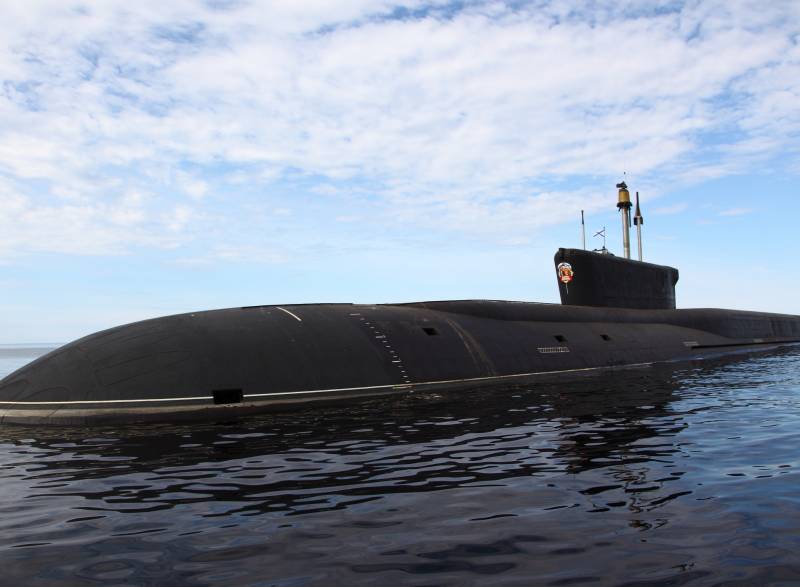
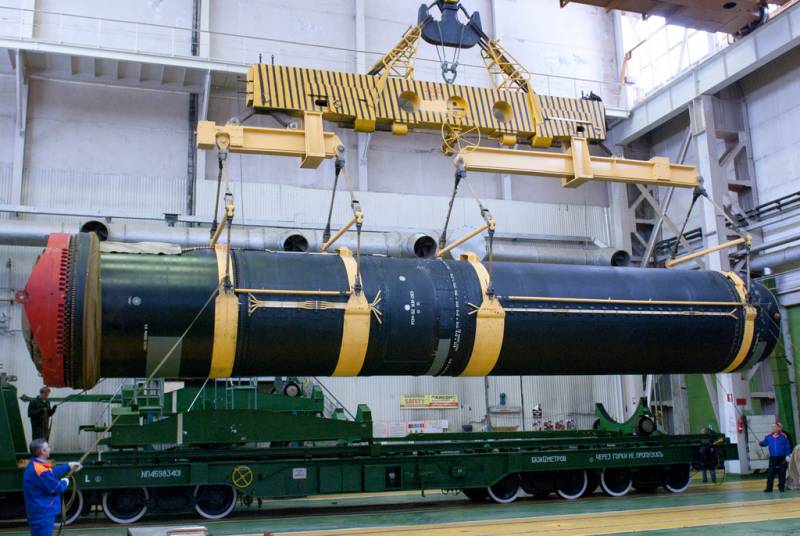
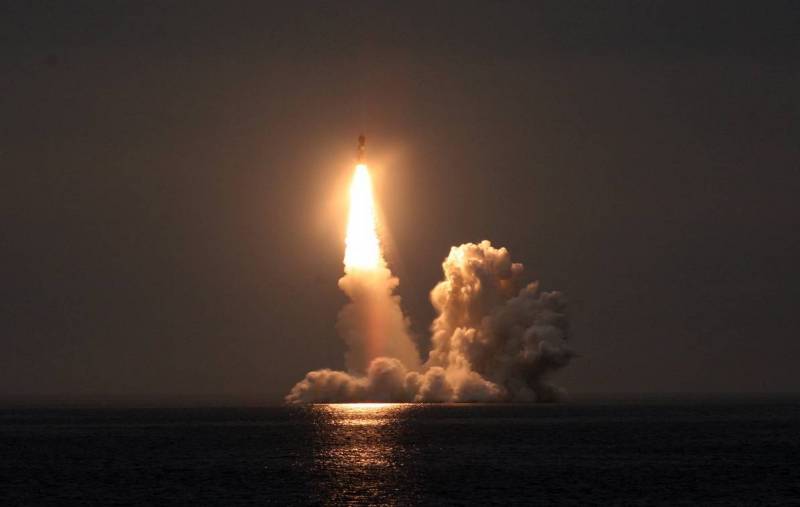
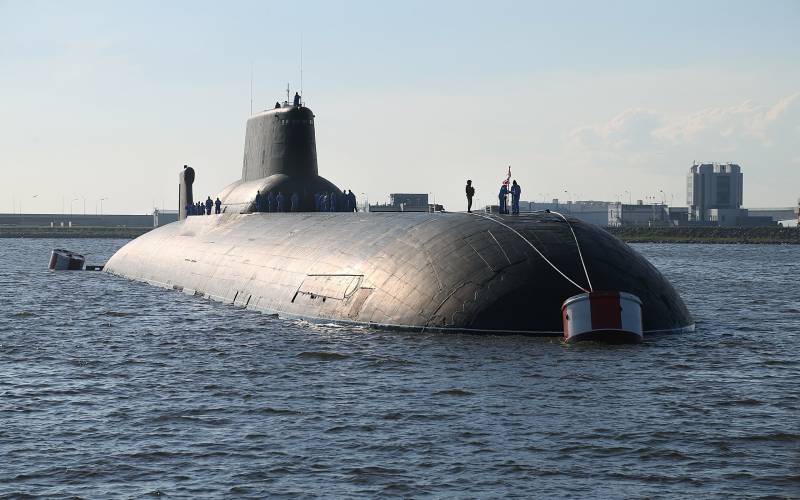
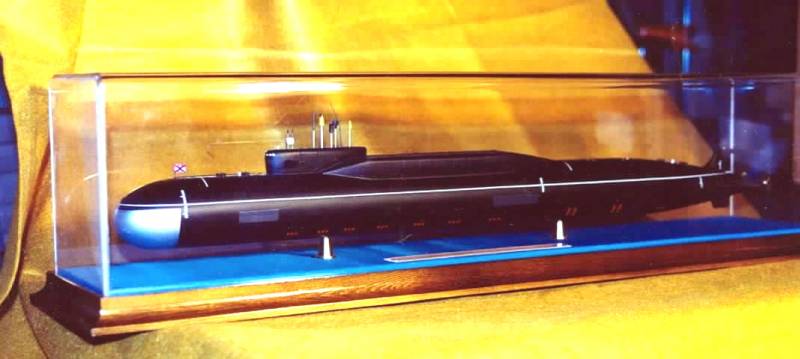
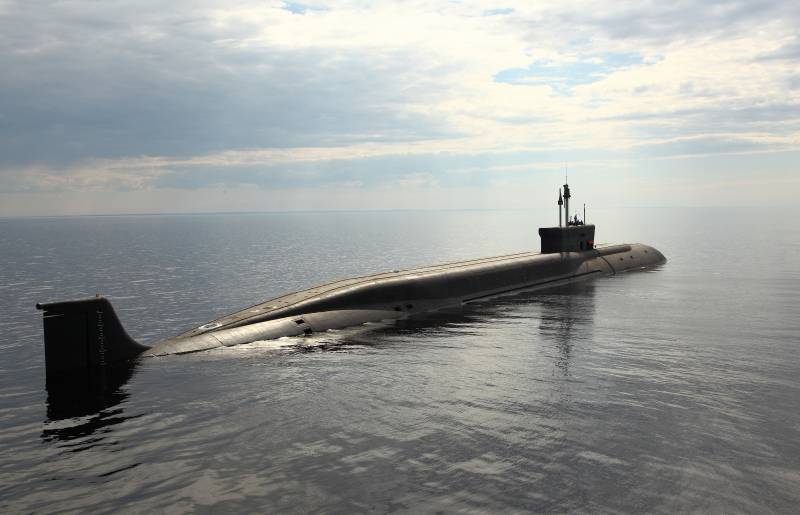
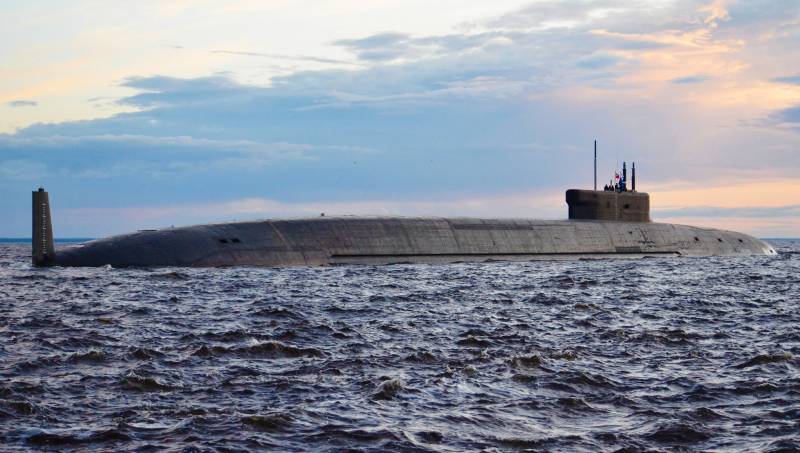
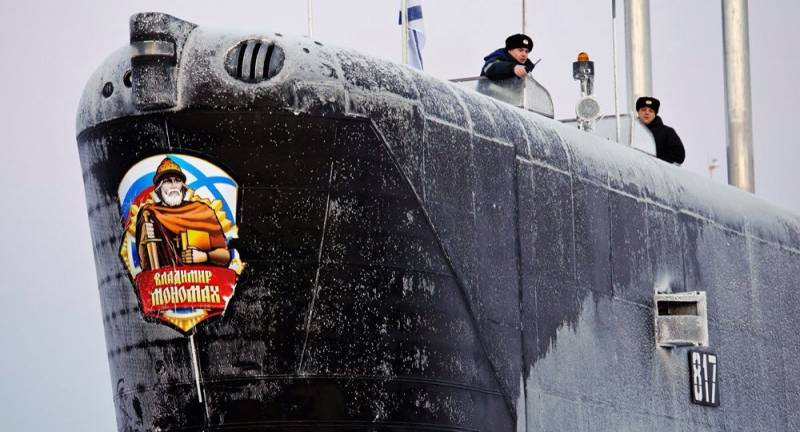
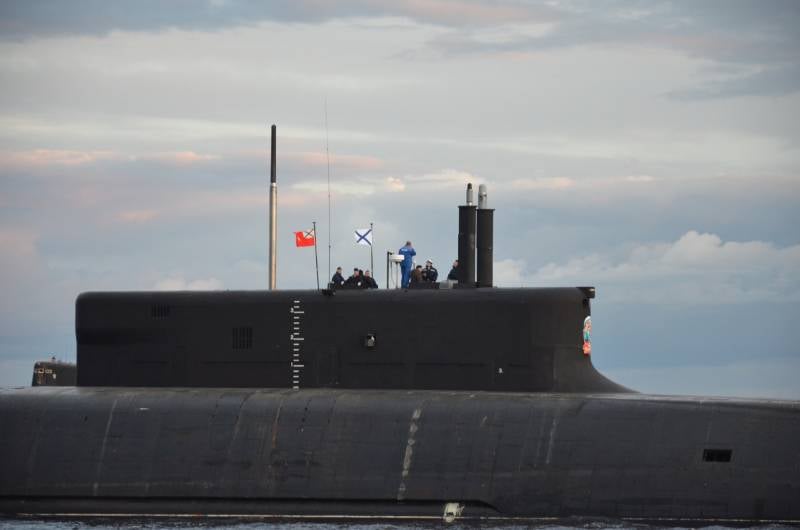
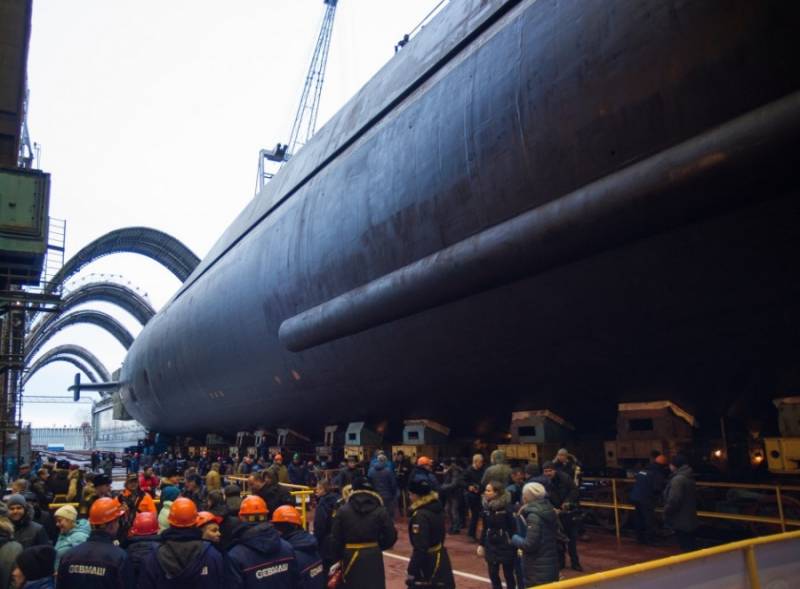
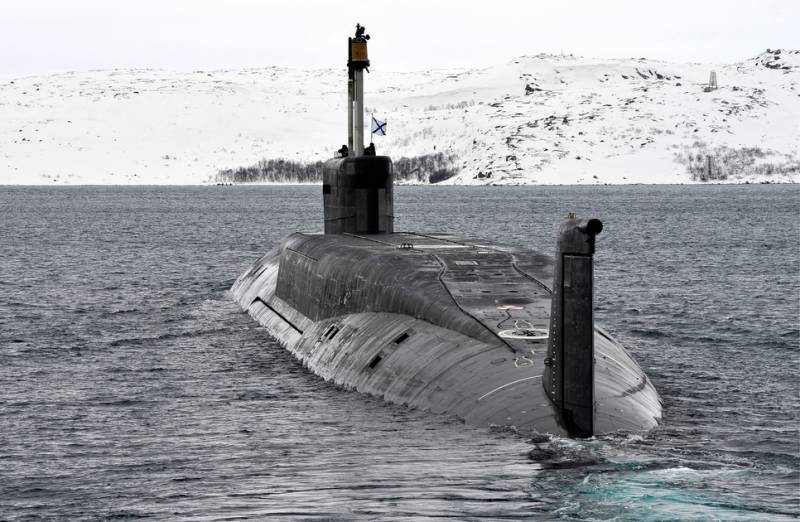
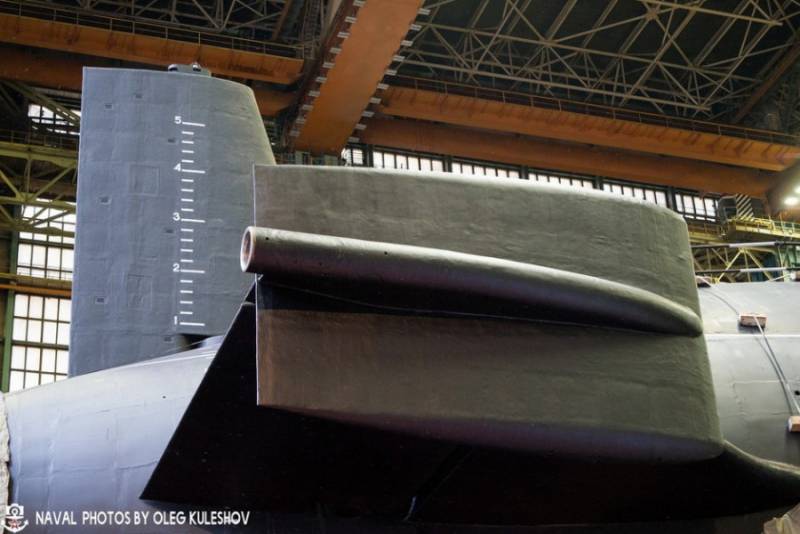
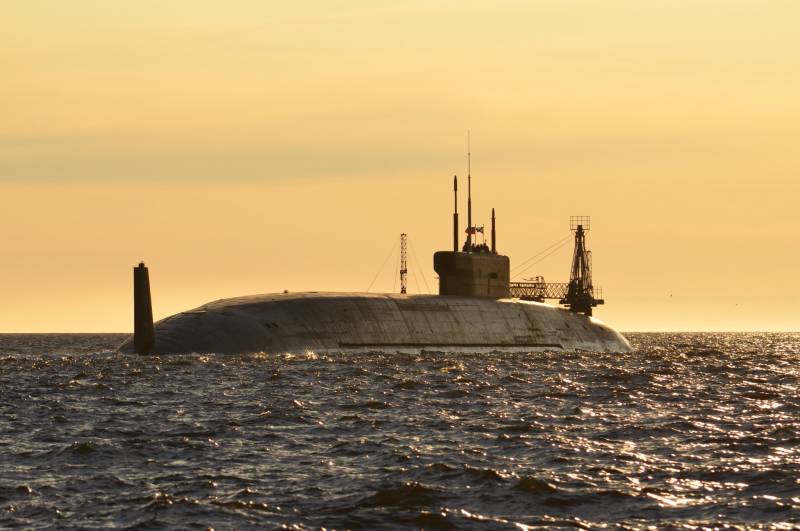
Information